Island of the Blue Dolphins, written by Scott O’Dell, is a captivating 1960 children’s novel based on the true story of Juana Maria, a Nicoleño Native American who spent 18 years alone on San Nicolas Island off the California coast. The book follows Karana, a young girl stranded on a dolphin-shaped island, as she navigates solitude, survival, and self-discovery, making it a timeless tale of resilience and growth.
1.1 Overview of the Novel
Island of the Blue Dolphins, a 1960 children’s novel by Scott O’Dell, is a historical fiction tale inspired by the true story of Juana Maria, a Nicoleño Native American. The story follows Karana, a 12-year-old girl stranded on a remote island off the California coast, as she learns to survive, fend for herself, and find inner strength. The novel explores themes of isolation, self-discovery, and resilience, blending adventure with emotional depth. It won the Newbery Medal in 1961 and is celebrated for its vivid portrayal of Karana’s journey and historical accuracy.
1.2 Historical Context and Inspiration
Island of the Blue Dolphins is rooted in the true story of Juana Maria, a Nicoleño Native American who lived alone on San Nicolas Island for 18 years in the 19th century. Scott O’Dell drew inspiration from her remarkable tale, blending historical facts with fiction to create a compelling narrative. The novel reflects the cultural and historical context of Native American life, the impact of outsiders, and the resilience of a young girl adapting to isolation, making it a unique blend of fact and storytelling.
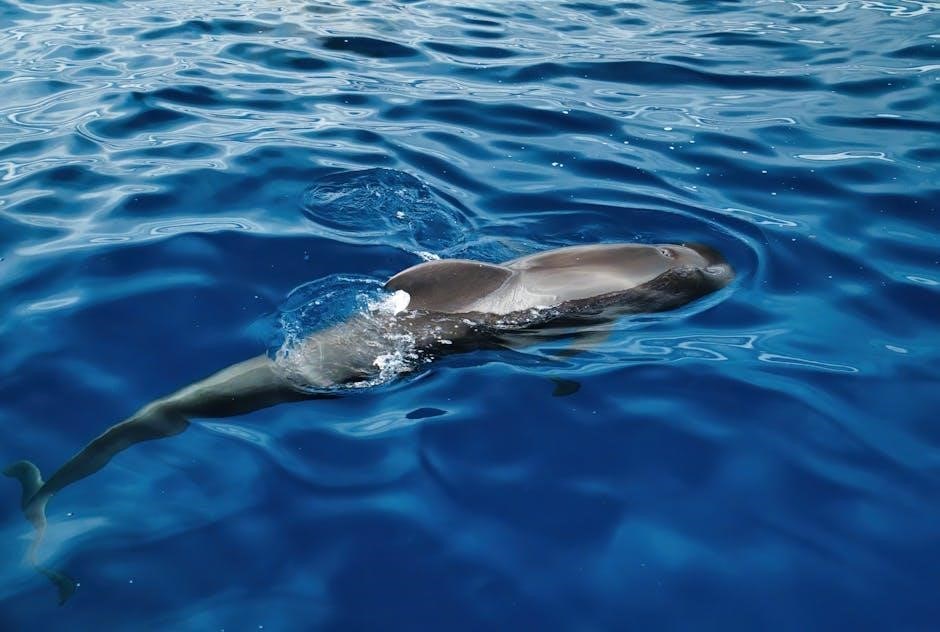
Author Background: Scott O’Dell
Scott O’Dell, a renowned American author, crafted Island of the Blue Dolphins, earning the Newbery Medal in 1961. His work, inspired by Juana Maria’s true story, blends historical fiction with cultural insights, captivating readers with its authenticity and depth.
2.1 Scott O’Dell’s Life and Work
Scott O’Dell was born on May 23, 1898, in California and passed away on October 15, 1989; A journalist and educator, he transitioned to writing children’s literature, earning acclaim for Island of the Blue Dolphins. Inspired by the true story of Karana, a Nicoleño girl, O’Dell conducted extensive research to ensure historical accuracy. His work, blending cultural insights with compelling narratives, captivated readers, securing his legacy as a master of historical fiction for young audiences.
2.2 Research and Historical Accuracy in the Novel
Scott O’Dell meticulously researched the Nicoleño culture and the true story of Juana Maria to ensure historical accuracy in Island of the Blue Dolphins. He drew from primary sources, including missionary records and ethnographic studies, to authentically depict Karana’s tools, clothing, and survival techniques. O’Dell’s attention to detail, such as the construction of plank canoes and the use of native plants, enriches the narrative, blending factual precision with imaginative storytelling to create a compelling and educational tale.
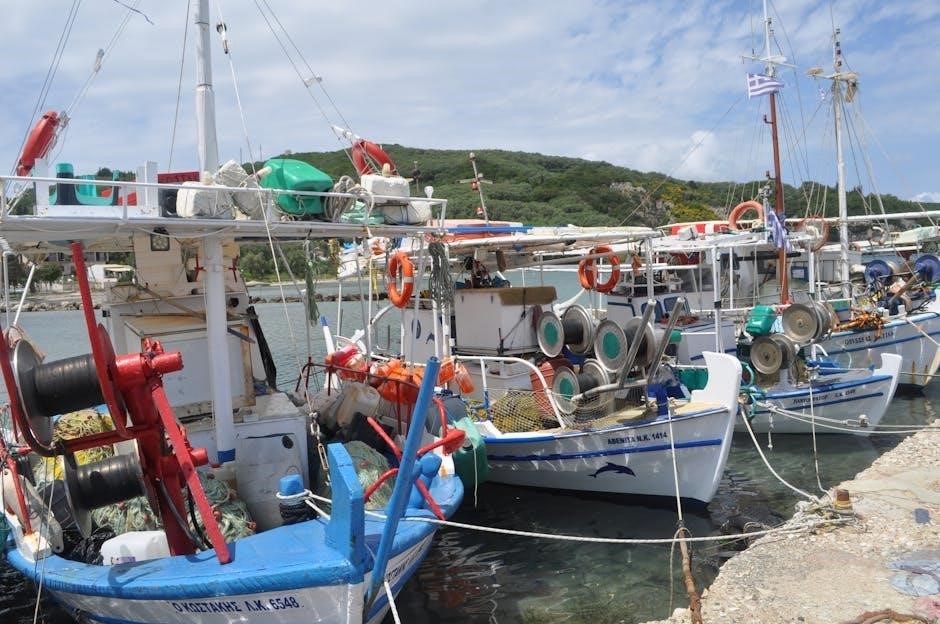
Plot Summary of “Island of the Blue Dolphins”
Island of the Blue Dolphins tells the story of Karana, a 12-year-old Native American girl stranded on an island after her brother dies and her tribe leaves. She survives by gathering food, building shelter, and fending off wild animals, discovering strength and self-discovery during her isolation until her eventual rescue.
3.1 Key Events in the Story
The story begins with Karana and her brother Ramo gathering roots when they spot a red ship. After Ramo’s tragic death, Karana decides to leave the rescue ship, returning to the island. She survives by finding food and building shelter, facing challenges like wild animals. Later, Aleutian hunters arrive, and Karana kills one, leading to her isolation. She tames a wild dog, Rontu, and eventually kills the remaining wild dogs. Years later, another ship arrives, and Karana departs the island, marking the end of her solitude.
3.2 Climax and Resolution
The climax occurs when Karana kills a young Aleutian hunter, intensifying her isolation. Over time, she learns to coexist with nature and herself. Years later, another ship arrives, and Karana, now a strong, self-reliant woman, decides to leave the island, marking the resolution. Her journey symbolizes growth, resilience, and the triumph of the human spirit, leaving a lasting legacy of survival and self-discovery.

Protagonist: Karana
Karana, a 12-year-old Native American girl, is the resilient protagonist who survives isolation on an island, showcasing her strength, adaptability, and transformation into a capable, self-reliant woman.
4.1 Character Development and Traits
Karana evolves from a dependent girl to a self-sufficient woman, displaying courage, resourcefulness, and resilience. Her ability to adapt to isolation, build tools, and find peace in solitude highlights her growth. Initially fearful, she learns to coexist with nature and predators, showcasing her determination and intelligence. Her journey transforms her into a symbol of strength and independence, inspiring readers with her ability to thrive in adversity.
4.2 Karana’s Survival Strategies and Growth
Karana’s survival on the island is marked by her resourcefulness and adaptability. She builds shelters, fashions weapons, and creates clothing from cormorant feathers, showcasing her practical ingenuity. Over time, she learns to hunt, fish, and gather food, demonstrating resilience. Karana also forms bonds with animals, like Rontu and the birds, reflecting her emotional growth. Her journey fosters self-reliance and inner strength, transforming her into a capable and independent individual, embodying the spirit of survival and personal discovery.
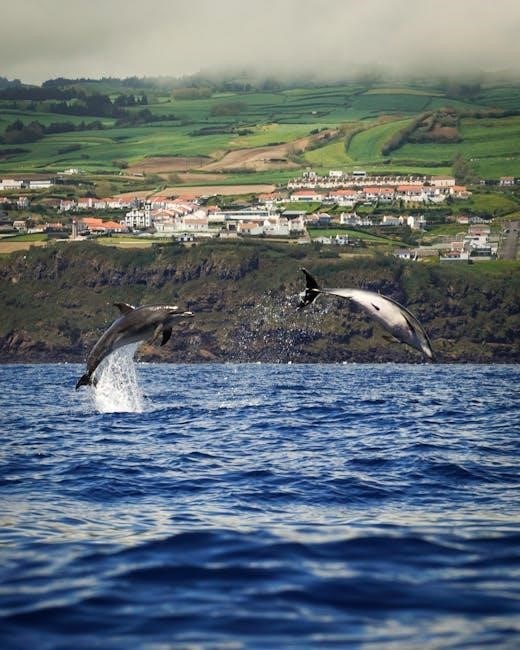
Historical Context and Real-Life Inspiration
Island of the Blue Dolphins draws inspiration from the true story of Juana Maria, a Nicoleño Native American stranded on San Nicolas Island for 18 years. Scott O’Dell meticulously researched her life and the historical events that led to her isolation, ensuring the novel’s authenticity and depth. The story reflects the clash between indigenous cultures and external forces, making it a poignant historical fiction.
5.1 The True Story of Juana Maria
Juana Maria, a Nicoleño Native American, was stranded on San Nicolas Island for 18 years after her tribe was displaced. She survived alone, demonstrating remarkable resilience. Her story inspired Scott O’Dell to write Island of the Blue Dolphins, blending historical facts with fiction. Juana Maria’s life reflects the challenges faced by indigenous peoples during the 19th century, making her a symbol of strength and adaptation in the face of isolation and cultural upheaval.
5.2 San Nicolas Island and Its Significance
San Nicolas Island, part of California’s Channel Islands, holds significant historical and cultural importance. Its remote location and harsh conditions made it a challenging environment for Juana Maria, inspiring Scott O’Dell’s novel. The island’s isolation mirrors Karana’s journey of self-discovery and survival. Today, it symbolizes resilience and adaptation, preserving the legacy of the Nicoleño people and the enduring themes of O’Dell’s work.

Themes and Symbols in the Novel
The novel explores themes of survival, isolation, and self-discovery, highlighting Karana’s journey from fear to resilience. Symbols like the island and dolphins emphasize her solitude and growth.
6.1 Themes of Survival, Isolation, and Self-Discovery
The novel delves into themes of survival, isolation, and self-discovery, as Karana navigates life alone on the island. Her journey from fear to resilience highlights the human capacity to adapt and thrive in adversity. Karana’s isolation forces her to confront her inner strength, fostering self-discovery and emotional growth. Through her experiences, O’Dell illustrates how solitude can lead to profound personal transformation and a deeper connection with nature and oneself.

6.2 Symbolism of the Island and the Dolphins
The island symbolizes Karana’s journey of self-discovery and resilience, serving as both a prison and a sanctuary. Its isolation mirrors her emotional state, while its abundance represents the resources she learns to harness. The dolphins, embodying grace and wisdom, signify guidance and hope. They appear at pivotal moments, offering comfort and inspiration, symbolizing the natural world’s support for Karana’s survival and growth, reinforcing the novel’s themes of harmony with nature and inner strength.
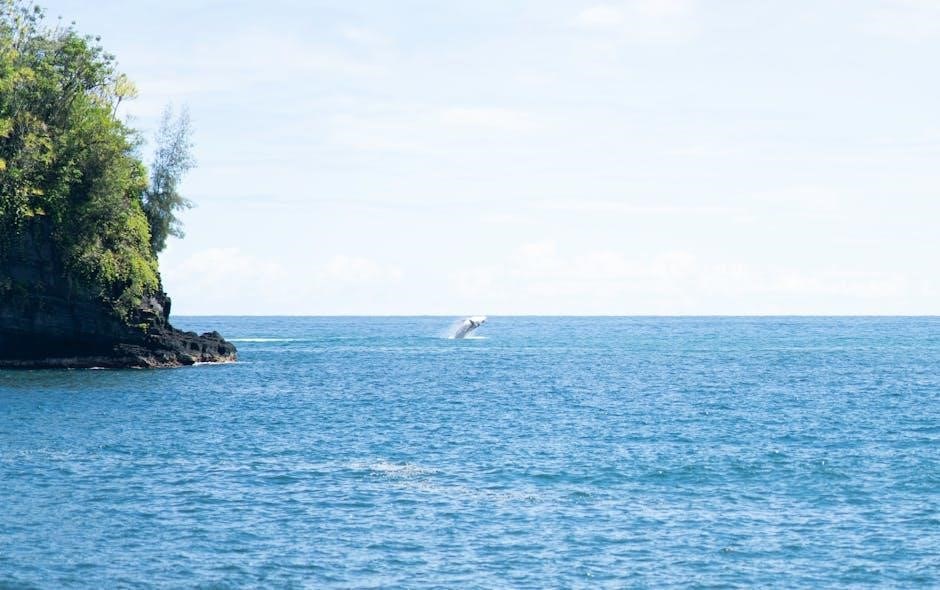
Film Adaptation of “Island of the Blue Dolphins”
The 1964 film adaptation, directed by James B. Clark, stars Celia Kaye as Karana. It received mixed reviews but remains a notable interpretation of the novel.

7.1 Overview of the 1964 Film
The 1964 film adaptation of Island of the Blue Dolphins, directed by James B. Clark, stars Celia Kaye as Karana. It faithfully captures her journey of survival, self-discovery, and resilience on a remote island. The movie follows her challenges, from fending off wild animals to finding inner strength. While it received mixed reviews, it remains a notable interpretation of Scott O’Dell’s novel, offering a visual portrayal of Karana’s enduring spirit.
7.2 Reception and Impact of the Movie
The 1964 film adaptation received mixed reviews, with critics like Howard Thompson of The New York Times describing it as “a bit thin.” Despite this, the movie remains a cherished interpretation of Scott O’Dell’s novel. It introduced Karana’s story to a wider audience, highlighting themes of resilience and self-discovery. The film’s faithful adaptation of the novel’s spirit has made it a beloved classic among fans of children’s literature, ensuring its lasting impact on audiences.
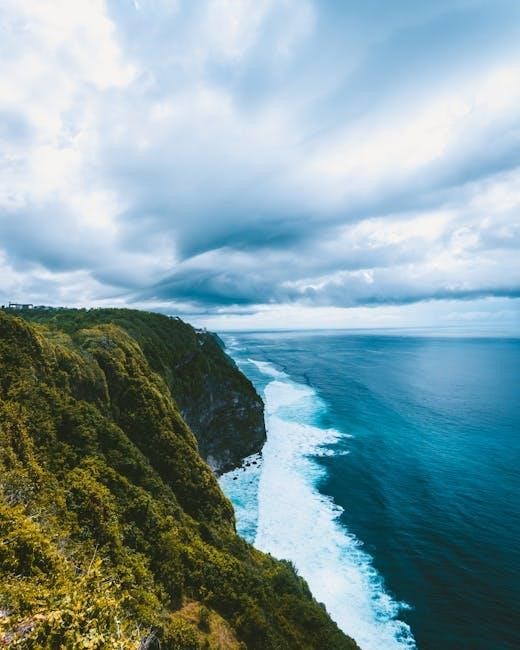
Legacy and Cultural Impact
Island of the Blue Dolphins has left a lasting legacy in children’s literature, earning the Newbery Medal and being named one of the best children’s books of the past 200 years. Its powerful story of resilience and self-discovery continues to inspire readers, solidifying its place as a timeless classic in American literature.
8.1 Awards and Recognition
Island of the Blue Dolphins earned the prestigious Newbery Medal in 1961, recognizing its outstanding contribution to children’s literature. In 1976, the Children’s Literature Association named it one of the top 10 American children’s books of the past 200 years, highlighting its enduring impact. Scott O’Dell’s meticulous research and compelling storytelling have solidified the novel’s status as a timeless classic, celebrated for its historical depth and universal themes of resilience and self-discovery.
8.2 The Novel’s Place in Children’s Literature
Island of the Blue Dolphins holds a revered place in children’s literature, celebrated for its rich historical fiction and universal themes of survival, resilience, and self-discovery. Its accessible prose and poignant storytelling have made it a beloved classic, appealing to both children and adults. The novel’s ability to blend adventure with deep introspection has cemented its status as a landmark work, widely studied in classrooms and cherished for its enduring lessons on courage, independence, and the human spirit.
Island of the Blue Dolphins remains a timeless tale of survival and resilience, inspiring readers with Karana’s journey. Its enduring impact on children’s literature is undeniable, earning it a Newbery Medal and a lasting place in hearts and classrooms worldwide.
9.1 Summary of Key Points
Island of the Blue Dolphins is a historical fiction novel by Scott O’Dell, inspired by the true story of Juana Maria, a Nicoleño Native American who lived alone on San Nicolas Island. The book follows Karana, a young girl stranded on an island, as she learns to survive, adapt, and find inner strength; Themes of resilience, self-discovery, and the human connection with nature are central to the story. The novel has won the Newbery Medal and remains a beloved classic in children’s literature.
9.2 Final Thoughts on the Novel’s Significance
Island of the Blue Dolphins stands as a timeless tale of resilience, self-discovery, and the profound bond between humans and nature. Its historical roots and themes of survival resonate deeply, offering readers a unique perspective on isolation and growth. Recognized with the Newbery Medal, it remains a cornerstone in children’s literature, inspiring generations to reflect on courage and the human spirit. Its enduring relevance ensures its continued place in educational curricula and literary discussions worldwide.

Leave a Reply
You must be logged in to post a comment.